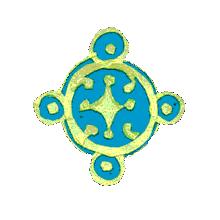| What is an Unfolding? |
jump | |
LIBRARY OF UNFOLDINGS
IN PROGRESS
|

|
|
RE-USABLE PACKETS AND FRAGMENTS OF GENERATIVE CODE FOR USE IN YOUR OWN PROJECTS
|
| Note: This part of the website is still a rudimentary first version, and is under continuous construction. You will find that it changes almost daily, since we are working hard to get a working model in place, and to continue improving it. If you wish to help us by modifying a particular unfolding, please go to open that item, and send us your proposed modification. |
| In order to understand what unfoldings are in practice, and for a summary explanation of unfolding as it occurs in nature, please look at the short essay called What is an Unfolding? |
|
The library follows:
Here we present a list of available "unfoldings" -- reusable units of process which you can introduce and rely on, as you go through the process of making and reshaping your neighborhoods. You choose the ones which are most useful to you, and use them. Each step is a practical "how-to" instruction which corresponds to one action in the generative sequence of unfolding.You may choose those steps which appear useful, use them, and ignore the others. Click on the particular step you would like to see. |
| PACKETS OF UNFOLDING | INDIVIDUAL UNFOLDINGS |
*********PACKET-0***********
0
General principles of morphogenesis
This packet is the foundation on which everything else rests. |
|
|
*********PACKET-1***********
1
Allow a Vision to Unfold in your Imagination
This packet provides some of the unfolding processes needed for people to learn to see their own vision of the neighborhood |
|
|
*********PACKET-2***********
2
Diagnosis: drawing the beginnings of coherent form from the latent centers in the land
This packet unfolds a skeleton structure from the land, by strengthening the latent centers that exist there
|
|
|
*********PACKET-3***********
3
Unfolding the pedestrian structure of the neighborhood
This packet contains the steps needed to unfold the pedestrian spaces, squares, and paths |
|
|
*********PACKET-4***********
4
Placing Buildings to form living Centers
This packet contains the key steps needed to make buildings generate positive space, and thus create a living spatial background for the neighborhood
|
|
|
*********PACKET-5***********
5
Land Tenure and Preparing to Plan
This packet contains certain steps needed to provide background legal structure to the neighborhood
|
|
|
*********PACKET-6***********
6
Cars and Parking
This packet provides a more subtle approach to the placing of cars, parking, and roads, which leaves the environment more pedestrian friendly |
|
|
*********PACKET-7***********
7
House positions
This packet provides essential background and rules of behavior for the siting of houses and apartments, going deep to correct the current malaise of present house layout in cookie-cutter neighborhoods |
|
|
*********PACKET-8***********
8
Individual House Design
This packet provides for the generic qualities of houses and flats as they impact the neighborhood |
|
|
*********PACKET-9***********
9
Who Does What?
This packet deals with uniqueness and belonging -- the way that each dwelling is unique to a family, or person, or group of people |
|
9.1
|
Who should design each dwelling?
|
9.2
|
What are the practical ways in which individuality and pride of possession can be made to coexist with a modern layout and productions process?
|
|
*********PACKET-9***********
10
The Construction Process
This packet deals with the interlocking of construction, evaluation, design, and modification, then moving forward with further construction -- as the normal (and necessary) way to build. |
|
|
*********PACKET-15***********
15
New building contracts
This packet contains new types of construction contracts that will allow, and are consistent with unfolding
|
|
|
© 2006 CES Terms of Use & Copyright Notice
|

